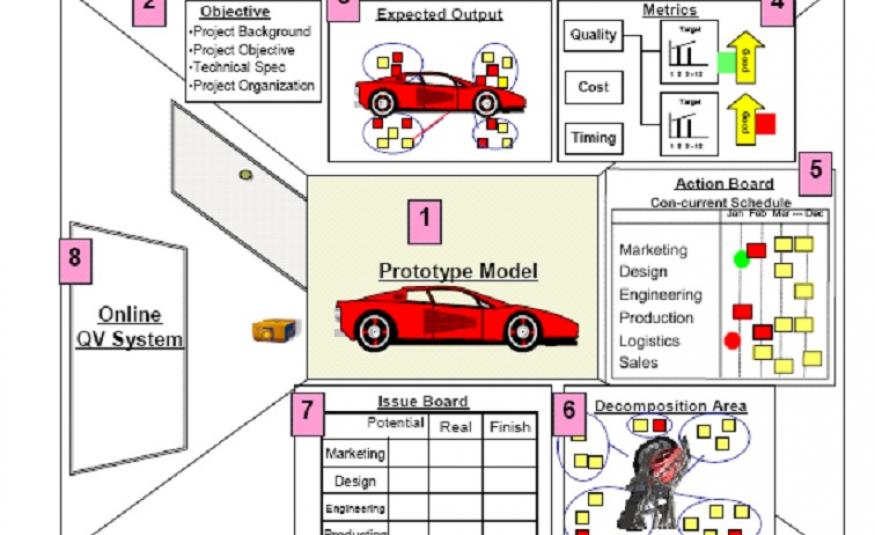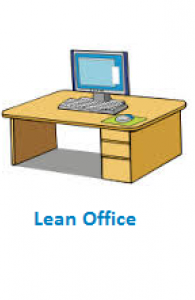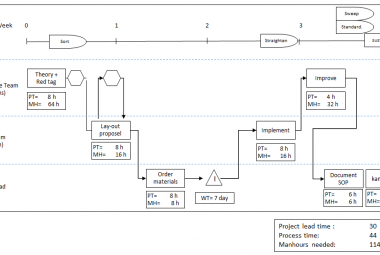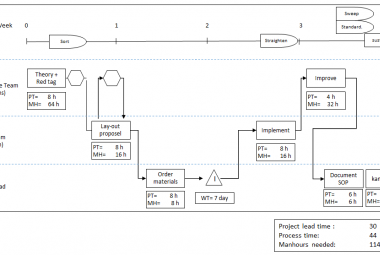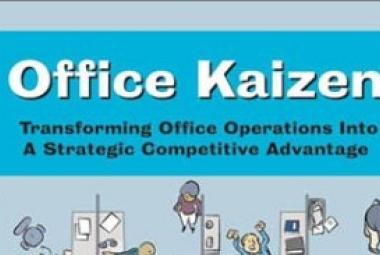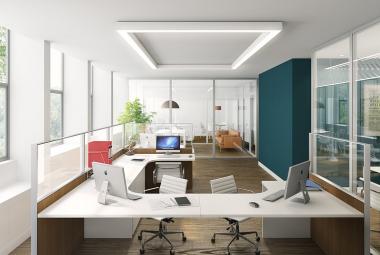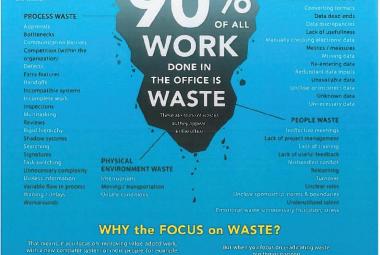In the article about communication cells, multiple team board set-ups are described. These set-ups are especially useful in an environment where there are cycle times of seconds, minutes or hours, but become more difficult when the cycle time is longer than a day. If a task or a group of tasks takes you longer than a week, how can you discuss the daily KPI within the team?
Project work (for instance: engineering, quality departments and research & development) are known for their repetitive cycles of work that are similar, yet different in every case. For these departments, the obeya, which is also known as the war room, can be a valuable communication tool (Gort, 2015)
The obeya was first developed at Toyota in 1994, when the first Toyota Prius was developed
Within lean, we always focus on the value stream of a proves and in a project environment, this mainly includes managing the flow of information between individuals and departments, to make sure everybody involved can make the best possible decision at that time that are necessary to keep the project progressing. The obeya supports this supporting need, with the main goals to collect and to manage project information
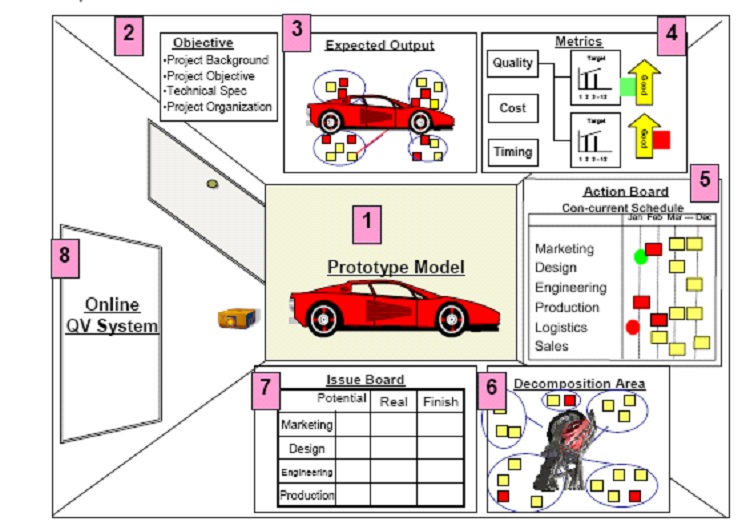
Illustration 1: obeya example (Source: Blog van Mario H. Trentim)
The OBEYA ROOM for a R&D project consists of a few standard parts, all visualized in illustration 1.
For starters, the prototype of the product that is being developed is put in the middle of the room. A visual of the actual end product for everybody to see helps the team to better understand the challenges of the designing process. It does not need to be a functioning product, sometimes, a scaled model of the product suffices.
Second, the design goals of the product are hanged on the wall. What are the goal features of the design and how are these linked to the organizational strategy? These questions can help make decisions during the project.
The vision about the final product can be found next to the design goals. What are the expectations in terms of what the product should look like?
Then, it is time for the KPI´s. Just like products in a production process, projects can be measured in terms of costs, quality and expected delivery. The project team should continuously be focused on these to make sure targets in all three of these areas are achieved.
The project value stream map, which means the team works backwards from project milestones, to the tasks that need to be done to achieve those milestones and the decisions that need to be made to finish those actions. Illustration 2 shows an example of a project VSM.
The Decomposition table is an overview of the product with the possible subsystems that need to be designed. Defining subsystems within the product helps to focus on modular design and identifies what specialists are necessary for the design.
Then there is the action list, which includes all problems that arise during the product that need to be tracked, similar to the 3C list on a team board.
Finally, a beamer is available, to be able to project information on the wall that can support further exchange of information.
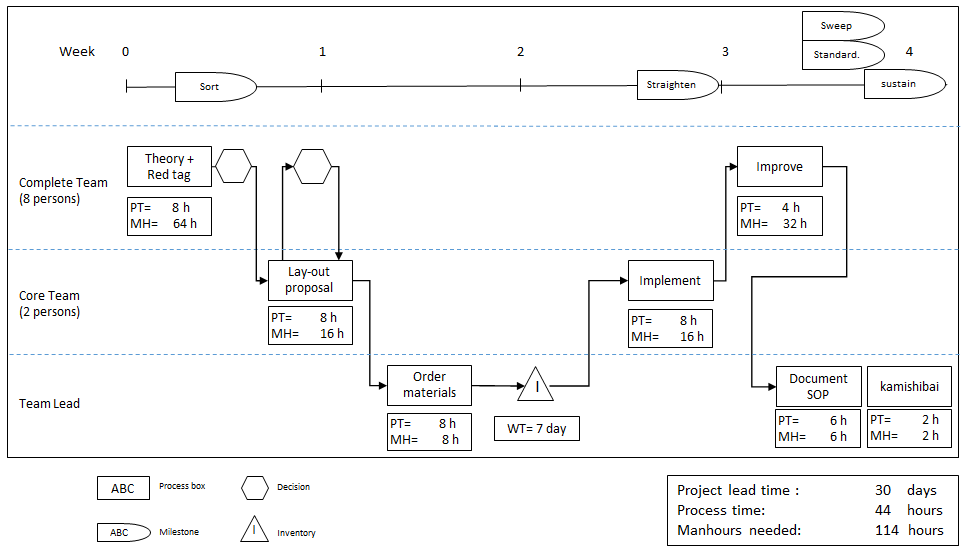
Illustration 2: example of a pull planning (see the article: VSM for Projects)
De largest Waste in R&D processes is probably waiting for information (Morgen & Liker, 2006) and therefore the most important reason why projects are delayed. To prevent this delay from happening, the team should meet regularly in the obeya, to discuss who needs what information to be able to take the defined decisions in time. Within Toyota, teams meet 3 times a week. This short cycle facilitates the efficient exchange of information between disciplines.
The ´go and see´ principle is embedded in the obeya when the obeyas are mobile. When it is easy to move the posters or boards around, the obeya meeting takes place wherever the R&D process takes place, first in R&D department and later in production.
The obeya can be seen as a Team board for project work. This tool is one of the reasons why Toyota was able to design new cars within 10-15 months (with a 24 month industry average). How does the obeya do that? By reducing the number one office waste within project work: waiting for information. I believe, the Obeya is a valuable tool for project work that can be used not only in R&D, but also in engineering and project offices.
Ga verder naar:
Lean office - Project Value Stream Mapping
BRONNEN:
Gort, R. (2015). Lean Vertaald naar Projecten - Samen leren bouwen aan Innovatievermogen. Amsterdam: Lean Vertaald. (order this book (NL) )
Morgen, J. M., & Liker, J. K. (2006). The Toyota Product Development System. New York: Productivity Press. (summary / order this book)

